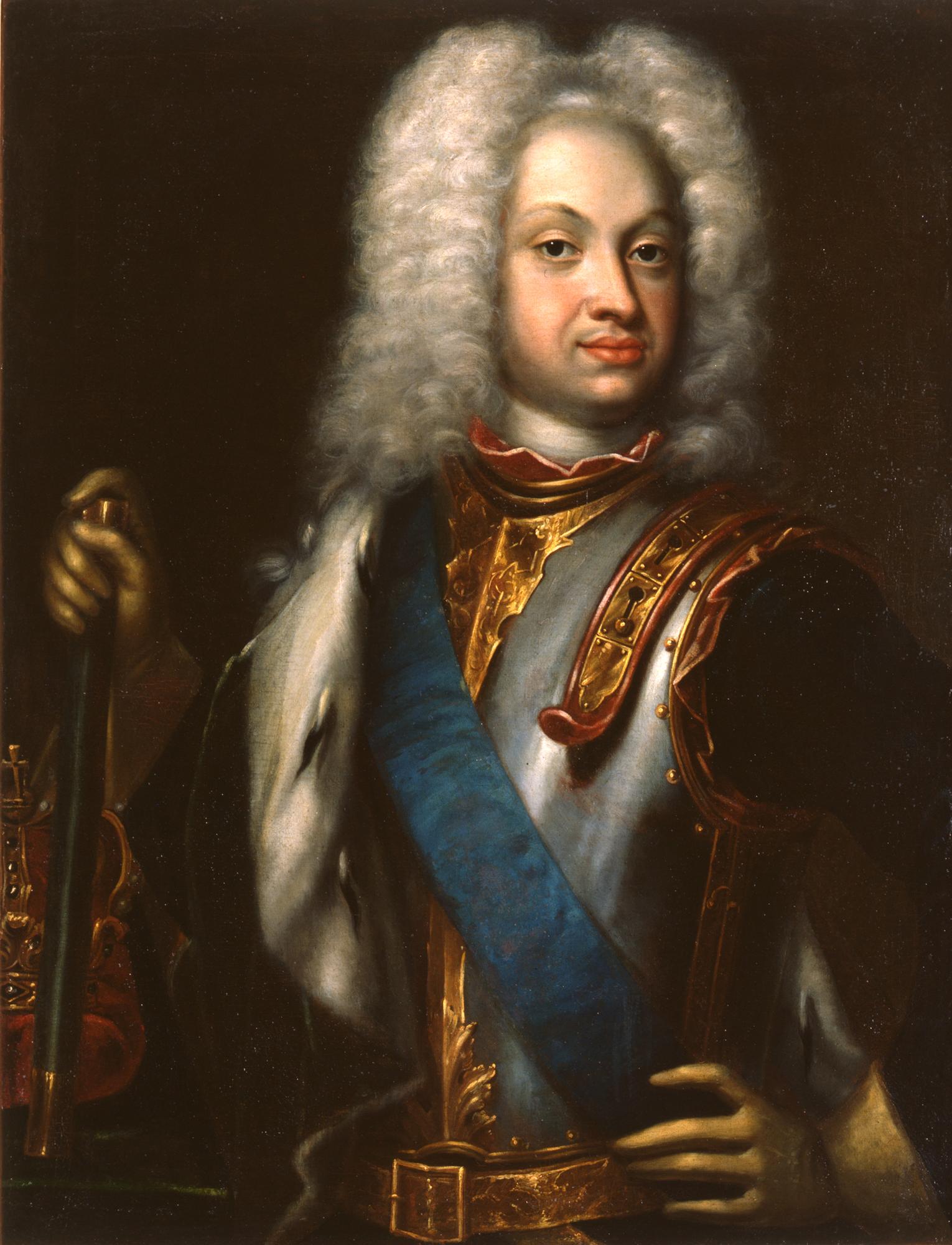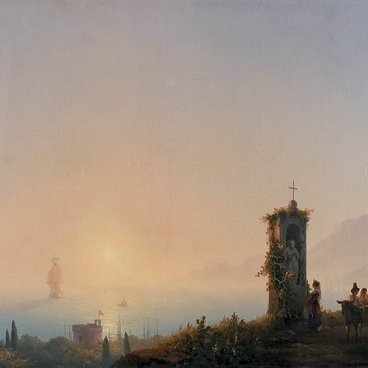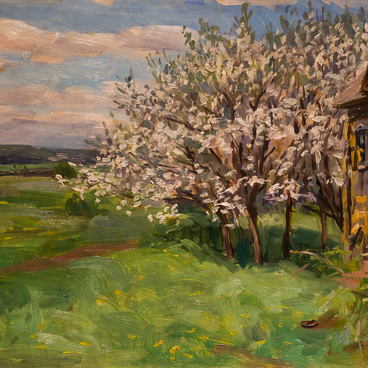The portrait of the Duke of Holstein was painted by an unknown artist in the 1720s. The picture is believed to have been made by a Western master. Charles Frederick of Holstein was a nephew of Charles XII of Sweden. In 1725 he married Tsarevna Anna Petrovna, a daughter of Peter the Great.
Portrait of Duke Charles Frederick
Время создания
1720s?
Размер
80x64 cm
Техника
Oil on canvas
Коллекция
2
Открыть в приложении#1
Unknown artist
Portrait of Duke Charles Frederick
#2
#4
The canvas is done in the genre of a classical semi-ceremonial portrait which was popular in the 18th-early 19th centuries. The portrait was supposed to emphasise a high social standing of the subject. It was achieved by rich clothes, ornate entourage, and neutral background.
#5
The Duke of Holstein is depicted in a powdered allonge according to the 18th century fashion. He is wearing a dark camisole and a cuirass – metal plates covering the back and the chest. Draped over the Duke’s right shoulder is an ermine mantle, which in the Russian Empire was a symbol of grand princedom. A blue moire ribbon of the Order of St. Andrew the Apostle the First-Called, the highest mark of distinction, rests on Charles Frederick’s chest.
The order itself is probably hidden under the cuirass. It was an eight-pointed silver star with the inscription ‘For Faith and Fidelity’. The order was worn on the left side of the breast above all other awards. The Duke’s right hand rests on a ceremonial mace, a symbol of strength and might. On a table behind the mace, there is a crown, a symbol of power.
#6
The Duke of Holstein is depicted half-length, in a dignified posture. He stands with his left hand bent at his side looking at the viewers top-down. His look is full of dignity, a contemptuous half-smile playing on his lips. His ornate attire, the expression on his face, the position of his hands, his whole demeanour – everything shows him off as a noble and important person. The artist, however, does not idealise his subject but presents him the way he was described by his contemporaries – of unattractive looks, morbid and weak.
#8
The Museum received the picture after the Second World War and it was registered as the “Portrait of an Unknown Man”. Later, historians identified the man as the husband of Anna Petrovna and the father of Peter III. Charles Frederick was born in 1700 in Schleswig, Germany. His mother was a sister of the King of Sweden and his father, Frederick IV, was the Duke of Schleswig. When Charles Frederick was two years old, his father was killed in the Great Northern War, and his native Schleswig was occupied by the Danes. After the death of Frederick IV, Charles Frederick’s mother took him to Sweden. In 1718, the King of Sweden died. The Duke of Holstein hoped to take the royal throne but Ulrica Eleanor, the deceased King’s sister, was ahead of him. Then Charles Frederick decided to go to Russia and try his luck there. In 1721, the Duke of Holstein came to Russia. Four years later he married Anna Petrovna, and shortly afterwards the couple left for the Duke’s home place, Schleswig.
#9
New Jerusalem Museum
читать дальшескрыть
00:00
00:00
1x
Portrait of Duke Charles Frederick
Время создания
1720s?
Размер
80x64 cm
Техника
Oil on canvas
Коллекция
2
Открыть в приложении
Поделиться



